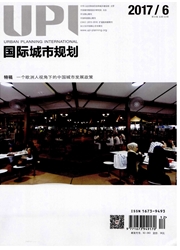

 中文摘要:
中文摘要:
作为对全球气候变化的一种选择,低碳城市空间与规划成为当下关注的焦点。面对快速城市化、经济社会全面转型与城市空间重构,中国大城市亟需反思当前的城市空间组织模式与郊区化模式,并思考适合中国国情的低碳城市空间组织原则。本文从经济效益和社会效益两个角度,全面比较两种主要的城市空间组织模式:分区制与单位制,力图从单位的视角给出低碳城市空间发展的启示。另外,文章借鉴美国、日本等发达国家城市郊区化的经验与教训,反思了目前中国城市郊区化模式及郊区空间组织方式。尝试提出转型期中国城市构建低碳城市的空间组织原则和发展战略,设想了可能应对全球气候变化的中国城市空间组织模式。
 英文摘要:
英文摘要:
As one of the effective actions to global climate changes, low carbon urban spatial organization and urban planning have drawn much attention. Under the background of rapid urbanization as well as great institutional transformation and spatial restructuring, it is of great importance to reconsider the effects and problems of current spatial organization and suburbanization pattern, and to build up primary principles aiming for developing low carbon city. This paper provides a multidimensional comparison of zoning and danwei system, which represents basic urban spatial organization in western and Chinese cities, and tries to rethink danwei community as a new spatial strategy to build up low carbon urban space. Drawing experiences and lessons from suburbanization in western cities, we argue that current mode of suburbanization in most large Chinese cities, which has already lead to many negative effects on urban environment as well as quality of life, needs to be adjusted in future. And 'new' danwei community would be an effective choice for Chinese cities to countering challenges of Global climate changes.
 同期刊论文项目
同期刊论文项目
 同项目期刊论文
同项目期刊论文
 期刊信息
期刊信息
